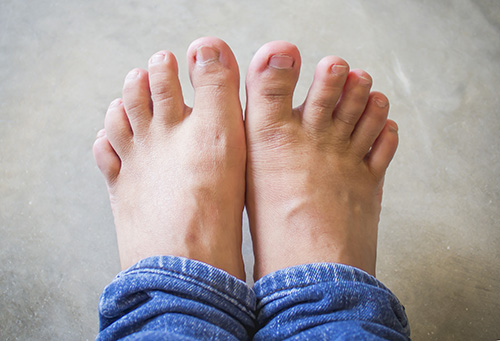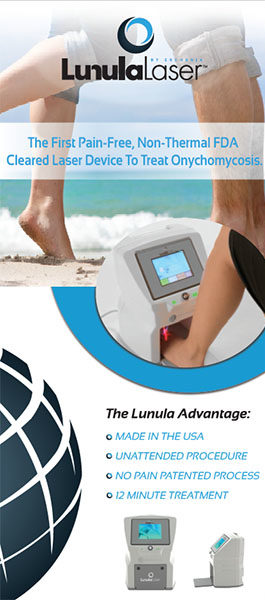Toenail Fungus
Toenail fungus infections can be extremely unsettling and embarrassing, but they’re a lot more common than you might think. In fact, the American Academy of Dermatology estimates that about 12% of Americans are affected, with older adults especially likely to carry the pathogen.
Traditional treatments for fungal nails are spotty at best, and carry a risk of potentially serious side effects. However, cold laser therapy has dramatically improved the situation, and treatment is now much safer and boasts much higher success rates.
Do I Have Fungal Nails?
At the earliest stages of a fungal nail infection, you might notice a single whitish or yellowish mark under the tip of your toenail, or small ridges forming on the nail plate. As the condition worsens, symptoms include:
- Discoloration (typically anywhere from off-white and gray to yellowish or brownish)
- Thickening of the nail
- Ends of the nail becoming crumbly, ragged, or flakey
- Severe warping or distortion of the nail shape
- Odor

What Causes Fungal Nails?
Toenail fungus is caused by dermatophyte fungi—the same microorganisms responsible for athlete’s foot, ringworm, jock itch, and other common skin conditions. If you have athlete’s foot, the fungi can sometimes get underneath the nail through tiny cracks or cuts. It’s also possible to spread the fungi from person to person through indirect contact with infected surfaces—gym or pool floors, towels, even salon tools.
Zap Your Fungus with Laser Therapy
At Foot and Ankle Specialists of Nevada, advanced cold laser therapy is the treatment of choice for fungal nails, although we still offer older methods like oral and topical antifungal medications. It offers many advantages over previous procedures.
How It Works
The beams of light generated by the laser are tuned at a precise wavelength, power, and frequency that allows them to pass through the nail plate and attack the fungus underneath—all without harming your own cells. This makes it both highly safe and highly effective as a method of treatment.
One laser session requires about 30-45 minutes, though times can vary depending on how many toes are being treated and how severe the condition is. No anesthetic is required and you should not feel any pain or discomfort. Once the session is over, you can go right back home or to work—no down time. Some patients may only need a single treatment; however, as many as four treatments might be necessary to fully eradicate the fungus.
Once the fungus has been eliminated, a new, healthy, clear nail will grow out it its place. Although you will likely see some level of aesthetic improvement very quickly, it may take several months for the portion of the nail that has already been damaged to grow out and away.

Advantages Over Traditional Treatments
Compared to antifungal medications, laser treatment is:
- More effective. Cure rates for oral antifungals hover around 50-70 percent, and may be less effective in older patients or those with low circulation. Topicals are even less effective, since the medicine can’t really penetrate the nail plate. Laser treatment has provided much better results.
- Safer. Oral medications in particular carry a risk of side effects, including liver damage and failure. Some people tolerate them well; others do not. There are no known side effects or health risks with laser therapy.
- More convenient. A typical oral antifungal treatment regime requires 6-12 weeks of daily pills. Topicals may require up to a year of daily application, alongside thinning of the nail on a weekly basis. Laser requires just 1-4 sessions of 30-45 minutes.
